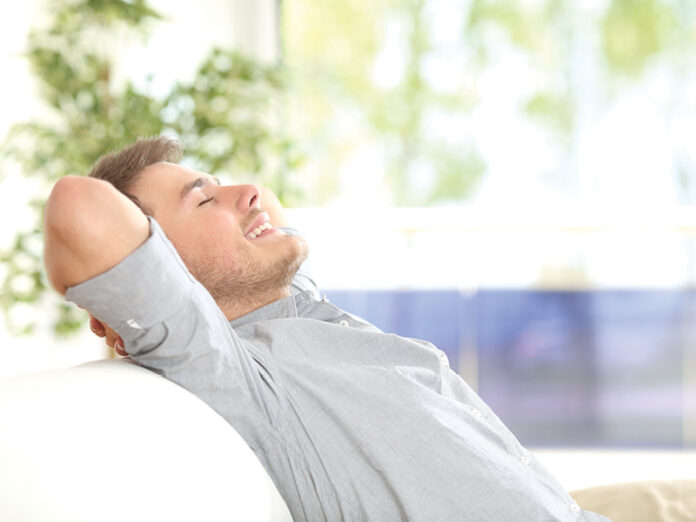
Greening your home is important for your health. Here are some of the best expert tips to help detoxify your home.
1. Indoor plants improve air quality
Plants spruce up a room’s décor and they can improve the air quality inside your home. Sonalie Figuerias of greenqueen.com says, “One of your best resources for ridding your home of harmful toxins like formaldehyde, benzene and carbon monoxide are plants such as the bamboo palm, the philodendron and the rubber plant.”
2. Take your shoes off!
One of the quickest and most effective changes you can make to impact the cleanliness of your home is to stop bringing the outside in with you. “Don’t wear shoes in the house, since most household dirt, pesticides and lead come in on your shoes,” says Anjali Shah, a health coach from Michigan. “Go barefoot or wear slippers inside.”
3. Make eco-friendly cleaning supplies
Natural cleansers already in your pantry go a long way to scrubbing your surfaces and leaving your home free of toxins. Use vinegar instead of bleach and try baking soda to scrub tiles and hydrogen peroxide to attack stains. “My No. 1 way to get chemicals out of the house is to make my own cleaning supplies,” says Becky Striepe, of craftingagreenworld.com. “We have a ton of DIY cleaning recipes that use all-natural ingredients to get you started. They’re effective, affordable and safer than store-bought cleaners.”
4. Shop smart, buy green cleaners
The most common piece of advice from our experts was to start making smarter, greener purchasing decisions. If you don’t make your own eco-friendly cleaning products, you can support brands that offer a green cleaning solution right off the shelf. “Mainstream products usually have nasty ingredients, so the best approach is to buy from green companies with strong reputations,” says Rona Fried, of sustainablebusiness.com. If you’re feeling overwhelmed by the switch to green, Lindsay Gallimore, of Calgary-based mamanloupsden.com says: “Start small with what already needs to be replaced at home. For example, when it’s time to buy a new bottle of shampoo, figure out how you can make the best choice. (I like solid shampoo bars!) Every time you find something new on your shopping list, spend a bit of extra time making sure the item — no matter how big or small — respects your goals for a toxin-free home.”
5. Stay away from antiseptic or antibacterial products
Germs are not our No. 1 enemy … creating antibiotic-resistant bacteria with the over-proliferation of antibacterial products is! Diane MacEachern, author of Big Green Purse, says, “My No. 1 tip would be to stop worrying about germs so much. Our obsession with germs has driven us to use all kinds of ‘antiseptic’ cleansers that, instead of making us healthier, may actually be weakening our ability to fight germs. Skip commercial cleansers that say they are antiseptic or antibacterial. Look for ingredients like triclosan on the list, which is an antibacterial agent, and don’t buy them, if that’s what the product contains. You can clean up pretty much everything in your house with hot soapy water and a sponge.”
6. Green your bedroom
We spend a third of our life sleeping, so it’s important to make sure the room you’re catching your ZZZ’s in is detoxified as much as possible. “To rid your bedroom of environmental toxins and harmful VOCs, choose a natural mattress, ensure paint is low-VOC and choose natural furniture that doesn’t off-gas into the future,” says Andrea Bertoli, a vegan chef in San Francisco and the force behind greenlivingideas.com. “Remove all scented candles, scented plug-ins and sprays that are adding chemicals into the air.”
7. Don’t introduce toxins into your home
Your battle against insects may be bringing toxins into your home. Greg Seaman, of Vancouver-based eartheasy.com says, “Many pest control products are more harmful than the pests. The simplest, most effective, safest and least expensive solution is diatomaceous earth (DE). DE is broad spectrum, so all household insect issues (even bedbugs) can be easily controlled.”
And don’t forget about the potential hazards of chemicals in your furniture or building materials. Anna Hackman, of green-talk.com raised this issue, saying, “Furniture, closet systems, and cabinetry can be made of particleboard which could emit formaldehyde. Inquire from the store or company if the product was made with glues that contain a low-emitting or no added-formaldehyde product.”
Follow these tips and you will be well on your way to creating a healthy and clean home that is safe for you, your family, and your pets.















